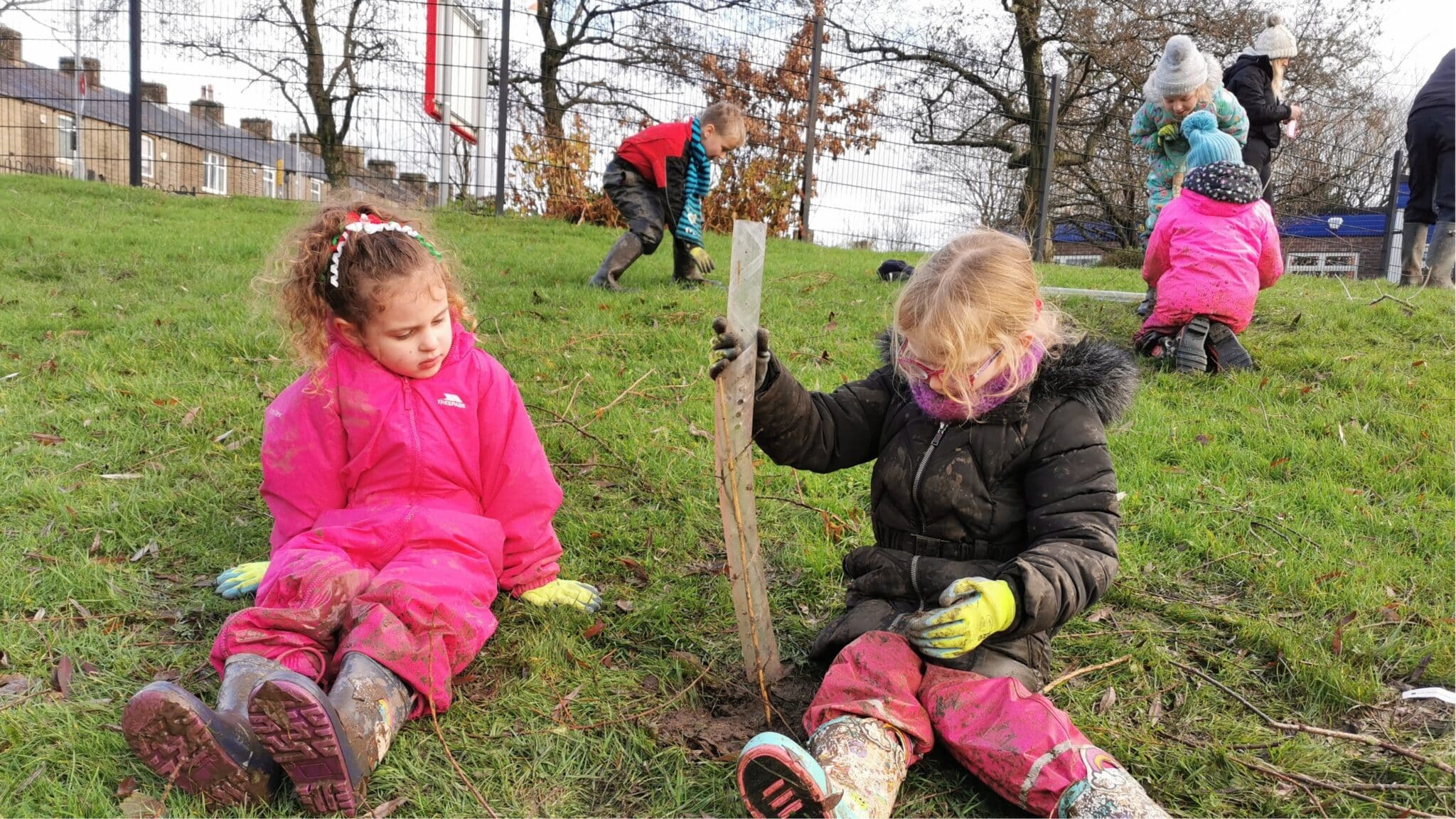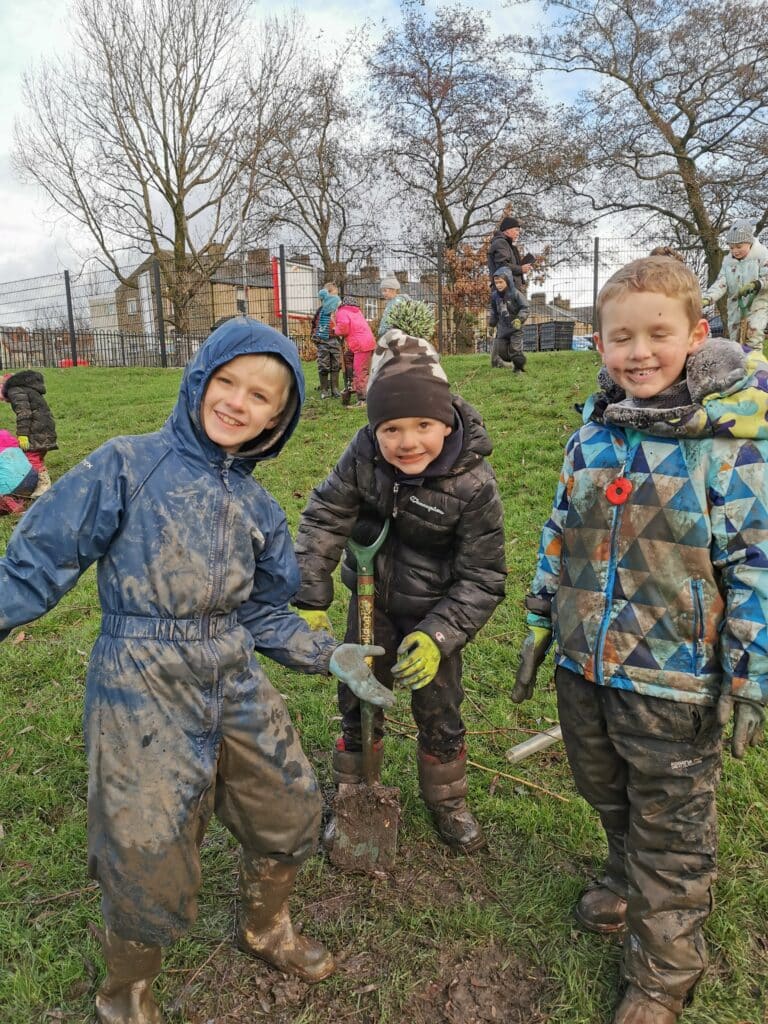
Pennine Lancashire Treescapes (PLANT)
The Pennine Lancashire Treescapes Project (PLanT) will plant nearly 40,000 trees across Pennine Lancashire in the winter of 2021/22.
Blackburn with Darwen, Burnley, Hyndburn, Pendle and Rossendale Borough Councils have come together with charities Ribble Rivers Trust and Prospects Foundation to deliver the project, thanks to almost £160,000 of funding from the Forestry Commission’s Local Authority Treescapes Fund and £11,000 from Trees for Cities. A mix of native tree species and fruit trees are being planted in a series of micro woodlands. They will help combat historic and ongoing losses of trees caused by urbanisation, pests and diseases.
About Pennine Lancashire Treescapes (PLanT)

Ribble Rivers Trust and Prospects Foundation will help children from 40 schools to plant 4,000 trees in their school grounds. The children will take part in a series of educational activities. These activities will help them to learn about the importance of trees for the environment, wildlife and people. The sessions will also teach them what their trees need in order to survive. Following this they will plant, on average, 100 trees in their school grounds.
The councils, along with volunteer groups such as Trees for Burnley and Pendle Extinction Rebellion, will plant 35,400 trees on 95 council-owned sites and encourage trees to naturally recolonise a further two sites.
Local residents are encouraged to volunteer to help plant the trees. This is a fantastic form of outdoor physical activity and a great way to boost physical and mental wellbeing. Plus, it offers a chance to meet new people.
You can also view all the sites on the interactive map at the bottom of the page.
why did you choose these locations?
Involving local people in planting the trees will also boost the chances of those people caring for the trees as they grow, ensuring they mature into healthy trees. Local people will also benefit from the fruit grown on the trees, which they are welcome to harvest and eat.
All the trees we will be planting are in areas that are visible to the public (e.g. public parks). Here they will improve the quality of green space provided in those places. In addition to the visual benefits, the trees will also help to reduce the impacts of air pollution, reduce the risk of flooding, sequester carbon, improve river water quality, provide much-needed homes for urban wildlife and help to reconnect up other woodland habitats: all in locations that evidence suggests need these benefits the most.
To find out about opportunities to plant trees in areas near you, visit our volunteer page for regular weekly updates.

